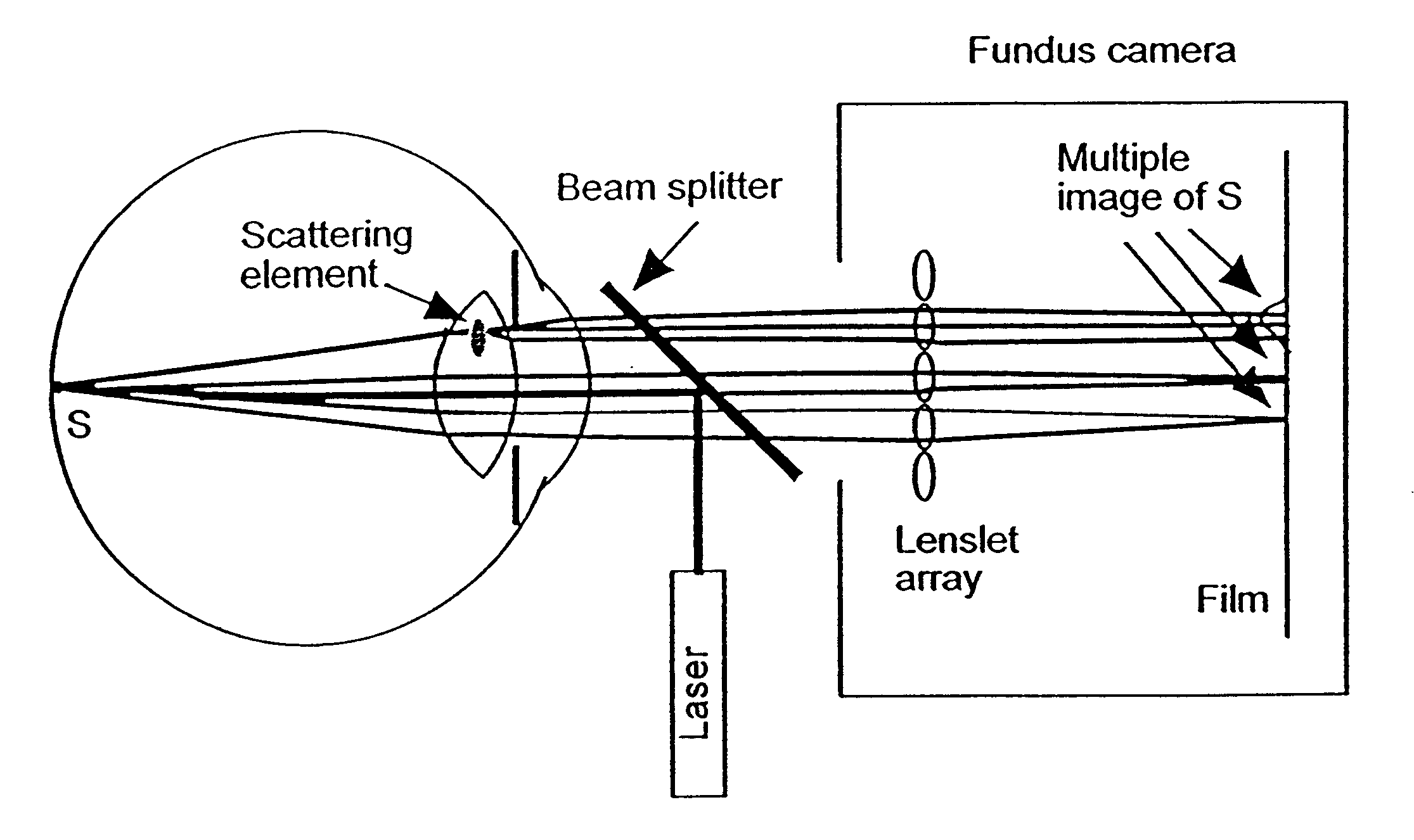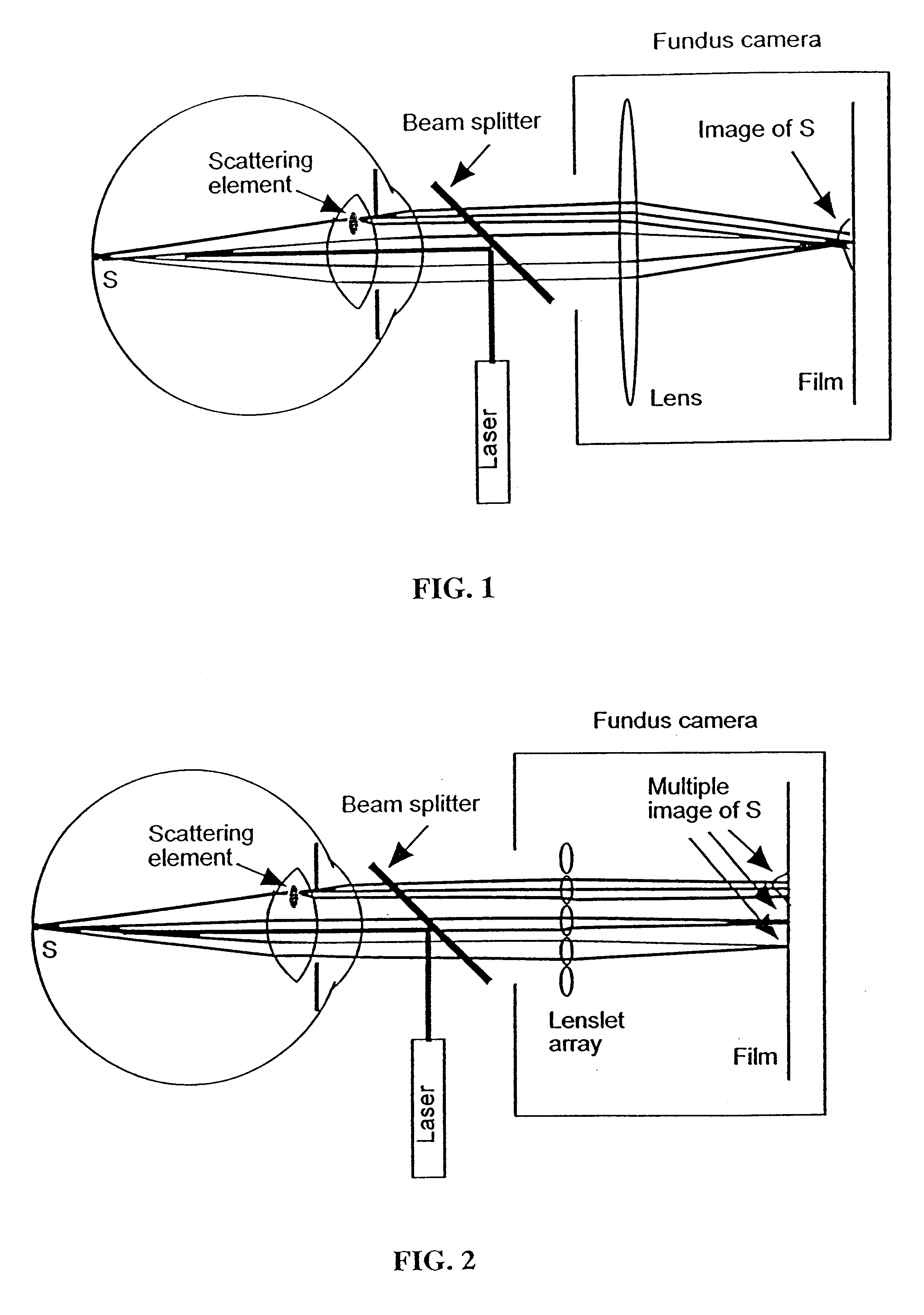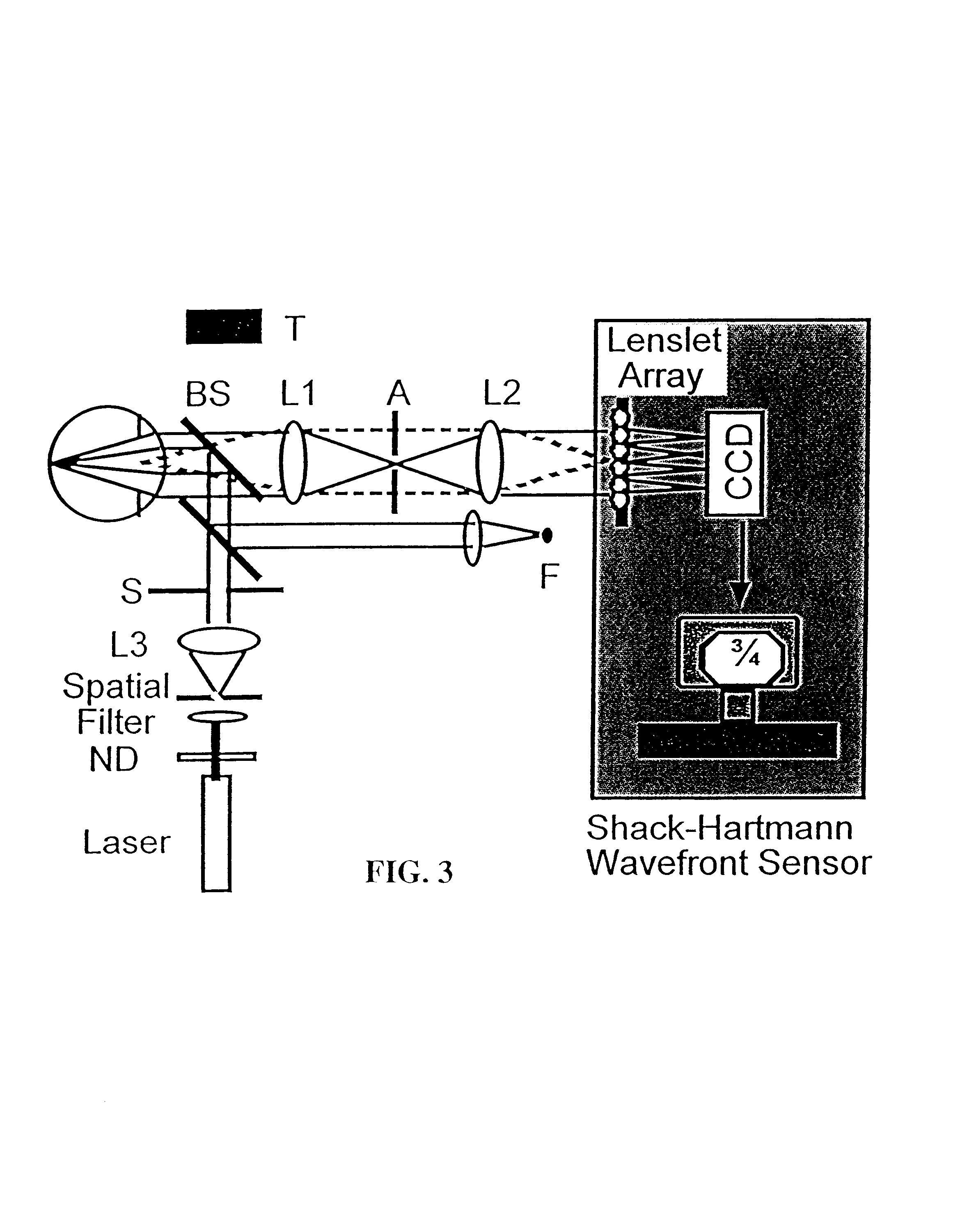Methods and systems for measuring local scattering and aberration properties of optical media
a technology of aberration and optical medium, applied in the field of optical measurement, can solve the problems of inherently unreliable method of subjective magnitude estimation, uncontrollable source of variability, and high time consumption of the null method used in the smirnov techniqu
- Summary
- Abstract
- Description
- Claims
- Application Information
AI Technical Summary
Problems solved by technology
Method used
Image
Examples
Embodiment Construction
Methods and systems practiced according to techniques disclosed herein offer several significant advantages. The present disclosure provides for the ability to spatially resolve local scattering and absorption characteristics of optical media, including the eye. That ability allows for the identification (including localization) of a wide variety of defects that act as scattering and / or absorption sources within the media. Defects that may be identified within the eye include, but are not limited to, abnormalities of the tear film, corneal scars, opacities, vacuoles, edema, foreign bodies in the anterior or vitreal chambers, cataracts, gradients in refractive index, structural abnormalities of the crystalline lens, drusen, pigmentation of the neural retina, and optically dirty, malformed, or defective contact lenses or spectacle lenses. Defects that may be identified within other optical media include, but are not limited to imperfections in anti-reflective optical coatings on lense...
PUM
 Login to View More
Login to View More Abstract
Description
Claims
Application Information
 Login to View More
Login to View More - R&D
- Intellectual Property
- Life Sciences
- Materials
- Tech Scout
- Unparalleled Data Quality
- Higher Quality Content
- 60% Fewer Hallucinations
Browse by: Latest US Patents, China's latest patents, Technical Efficacy Thesaurus, Application Domain, Technology Topic, Popular Technical Reports.
© 2025 PatSnap. All rights reserved.Legal|Privacy policy|Modern Slavery Act Transparency Statement|Sitemap|About US| Contact US: help@patsnap.com



